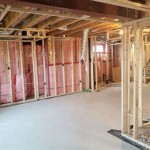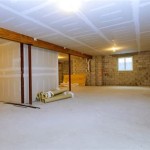House Floor Plans with Basement: Essential Aspects to Consider
When designing a house floor plan with a basement, several essential aspects warrant careful consideration. These include:
Basement Size and Layout
Determine the desired size of the basement based on its intended use (e.g., storage, recreation, guest room). Consider the layout, including the number and size of rooms, windows, and stairs.
Natural Light and Ventilation
Basements often lack natural light and ventilation. Incorporate windows or light tubes to bring in daylight and ensure adequate airflow. Proper ventilation can prevent moisture and mold problems.
Ceiling Height
Typical basement ceiling heights range from 7 to 9 feet. Consider the intended use of the space and ensure sufficient headroom. Lower ceilings may be acceptable for storage or utilities, while higher ceilings are preferable for habitable areas.
Drainage and Waterproofing
Basements are prone to moisture and water damage. Implement proper drainage and waterproofing measures, such as exterior drainage pipes, sump pumps, and vapor barriers, to prevent flooding and protect the space from moisture.
Utilities and Storage
Plan for essential utilities, including electrical, plumbing, and HVAC systems. Designate a specific area for storage, as basements are often used to store seasonal items or bulky equipment.
Egress and Safety
Ensure the basement has at least one safe and accessible egress point, typically a door or window that leads to the outside. This is crucial for emergency evacuations.
Accessibility and Comfort
If the basement is intended as a living space, consider accessibility features such as wide doorways, ramps, and grab bars. Insulation and adequate heating and cooling systems contribute to the comfort and livability of the basement.
Integration with the Main Floor
Plan the connection between the basement and the main floor. Consider the location and type of stairs, as well as any other methods of moving between the levels (e.g., elevator or chair lift).
Additional Considerations
Other factors to consider include:
- Building codes and regulations
- Soil conditions and potential for flooding
- Future expansion potential
- Budget and construction costs
By carefully considering these essential aspects, homeowners can create functional and comfortable basement floor plans that meet their needs, enhance their living space, and add value to their property.

Simple House Floor Plans 3 Bedroom 1 Story With Basement Home Design 1661 Sf Basementdesignflo One New

Photos Of Plan 1117 The Clarkson Basement Floor Plans House

Contemporary House Plan With 4 Bedrooms And 3 5 Baths 5311

Versatile Spacious House Plans With Basements Houseplans Blog Com

Designs For A House Basement And Ground Floor Plans Riba Pix

Stylish And Smart 2 Story House Plans With Basements Houseplans Blog Com

Extend Your Homes Living Space With A Basement Floor Plan

House Designs Single Floor Low Cost Plans 3 Bedroom With Basement Ranch

Hillside House Plan Modern Daylight Home Design With Basement

3 Bed Craftsman Ranch Plan With Unfinished Basement Architectural Designs 135021gra House Plans








